The road to Wembley
This session is very general, but not in a negative way. It’s very useful because it helps in all game situations. It’s technical and tactical with more than enough physical input.
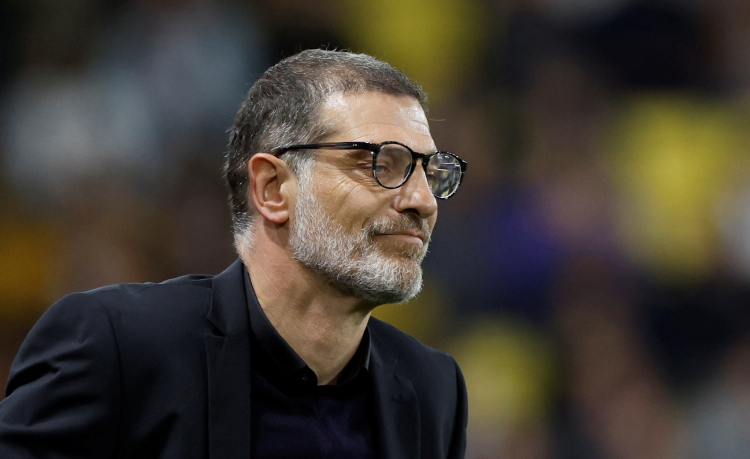
| Area | Half a pitch |
| Equipment |
Balls, bibs, cones, 3 mini goals, 2 full size goals |
| No. of Players | 20 players + 2 goalkeepers |
| Session Time |
30mins [not shown]
|
This session is very general, but not in a negative way. On the contrary, it has elements that you will find in every football game. It is best to do this at the beginning of the week, and it is the ideal session to do after a day off. Let’s say that we played on Saturday, and Sunday was regeneration for the ones who played, hard training for the ones who didn’t, Monday is a day off - so this session is ideal for Tuesday. We don’t want to go wild after a day off, but we want them focused and ready to go - and after a day off, we don’t want to have a very intensive session on small spaces, so we are using bigger spaces.
It’s very useful because it helps in all game situations. It’s technical and tactical with more than enough physical input. You get enough running distance from the players because it’s competitive; everything is with the ball and very dynamic. I did this session in different clubs, leagues, countries and continents, and the players loved it everywhere.
The session is made up of four different games, played on the length of the pitch from the box to the halfway line, and with a narrowed pitch width of 10m on each side (in the last game we use the whole width of the pitch).
We divide the players in two teams of 10, the blue team and the red team. Behind the halfway line and the box line are two coaches with the balls. Every time the ball is out of play, they restart the game.
“Everything is with the ball and very dynamic – players love it”
POSSESSION WITH GATES
After a 30-minute warm up [not shown] we set up a game focusing on ball possession in an area between the box and the halfway line, 50 yards wide. Two teams play 10v10 in the area. Two coaches are positioned outside of the area to feed balls in as needed. The players don’t have to keep their positions, but they do have to keep the ball. Each time they make 10 passes it’s a goal [1a].
[1a]
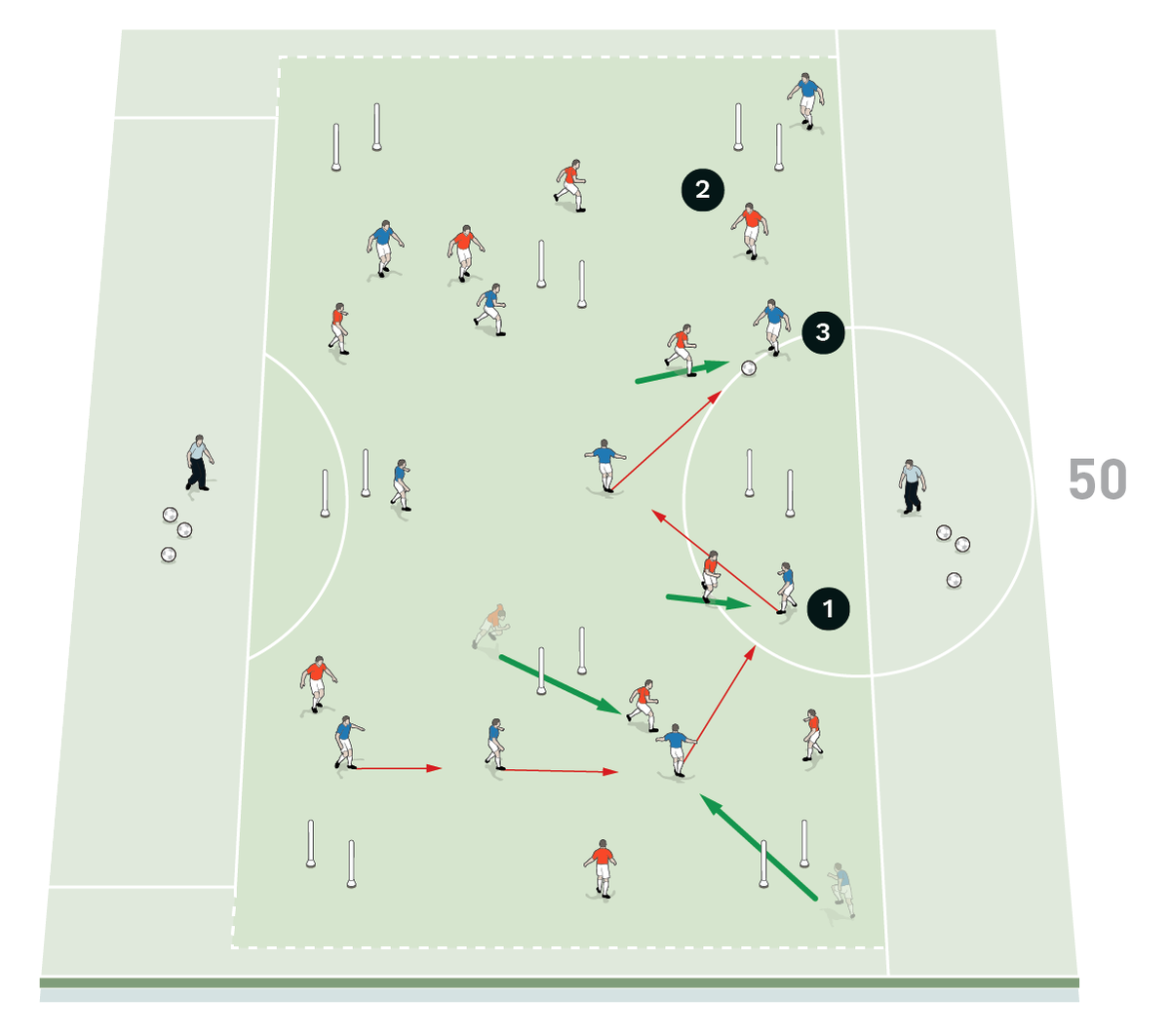
-
The blue team are in possession of the ball. They are limited to two touches
- The red team look to win the ball back, blocking easy access to the gates as they do so
- The blues complete 10 passes and gain a point
There are also eight gates on the pitch, and if they pass the ball through the gates to their team-mate, that’s a goal as well [1b].
[1b]
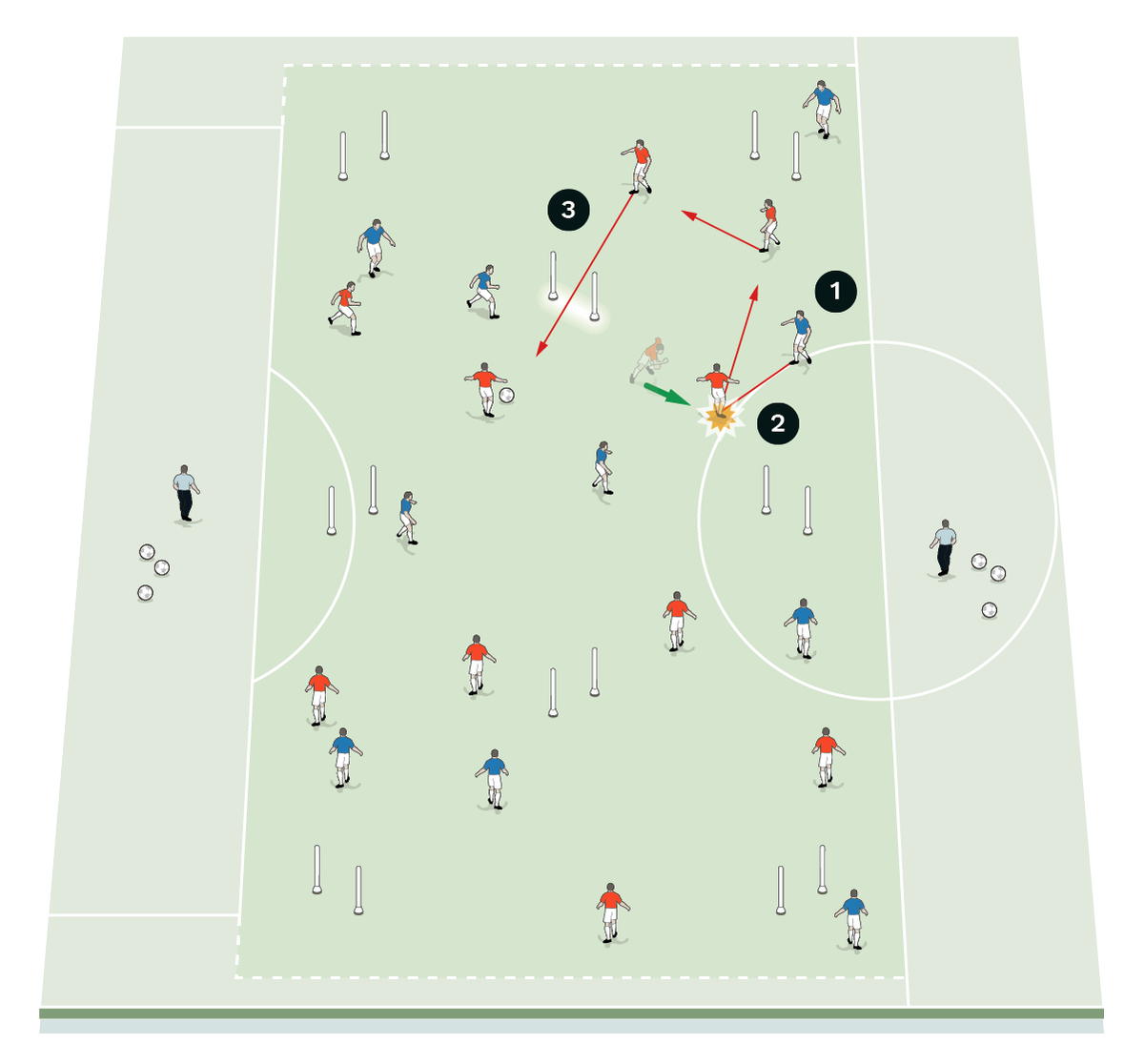
-
The blues continue to try to keep possession
- The red team win the ball back
- The red player plays the ball through a gate to a team-mate, gaining a point
They play with max two touches.
You want the team in possession to keep the ball, pass it nice and sharply, combine, create good angles, triangles, have a good first touch, invite the opponents, switch sides, use the whole pitch, and at the same time to use every opportunity to pass through gates, making good decisions. When they lose the ball, you want them to react quickly, the player nearest to the ball to press the ball, the others to cut options, and especially stop the opponent from passing through the gates. Likewise, you want the team without the ball to be narrow, together, to press as a pack, to close the gates, and to communicate.
The mistakes that players make in possession are technical errors, bad positioning, keeping the ball too long on one side, not penetrating the gates, decision making, not reacting quick enough when losing the ball, and for the team out of possession, not pressing as a group, not pressing the ball, only cutting options, not blocking passes through gates, not securing the ball when they take it.
We can progress the game by adding that the pass through the gates has to be through and back to be counted as a goal, and that a player can have more than two touches if they run with the ball through the gates and that is also a point. The winner of this game takes a 1-0 lead and we go to the next game after a two-minute break. We’d run this for two blocks of four minutes each.
“You want the team in possession to keep the ball, pass it nice and sharply, combine, create good angles, triangles, have a good first touch...”
TOUCHDOWN GAME
We move on to the next game with the same teams, same pitch, but we remove the gates. At the end of the pitch we add a zone of 5m on each side: we call it the touchdown zone.
The players are now in their positions, teams are in shape, we can use systems that we play, we can match different systems (depending on who we play against in our next game), whatever works for us. The players keep the ball in shape, 10 passes is a goal [2a]...
[2a]
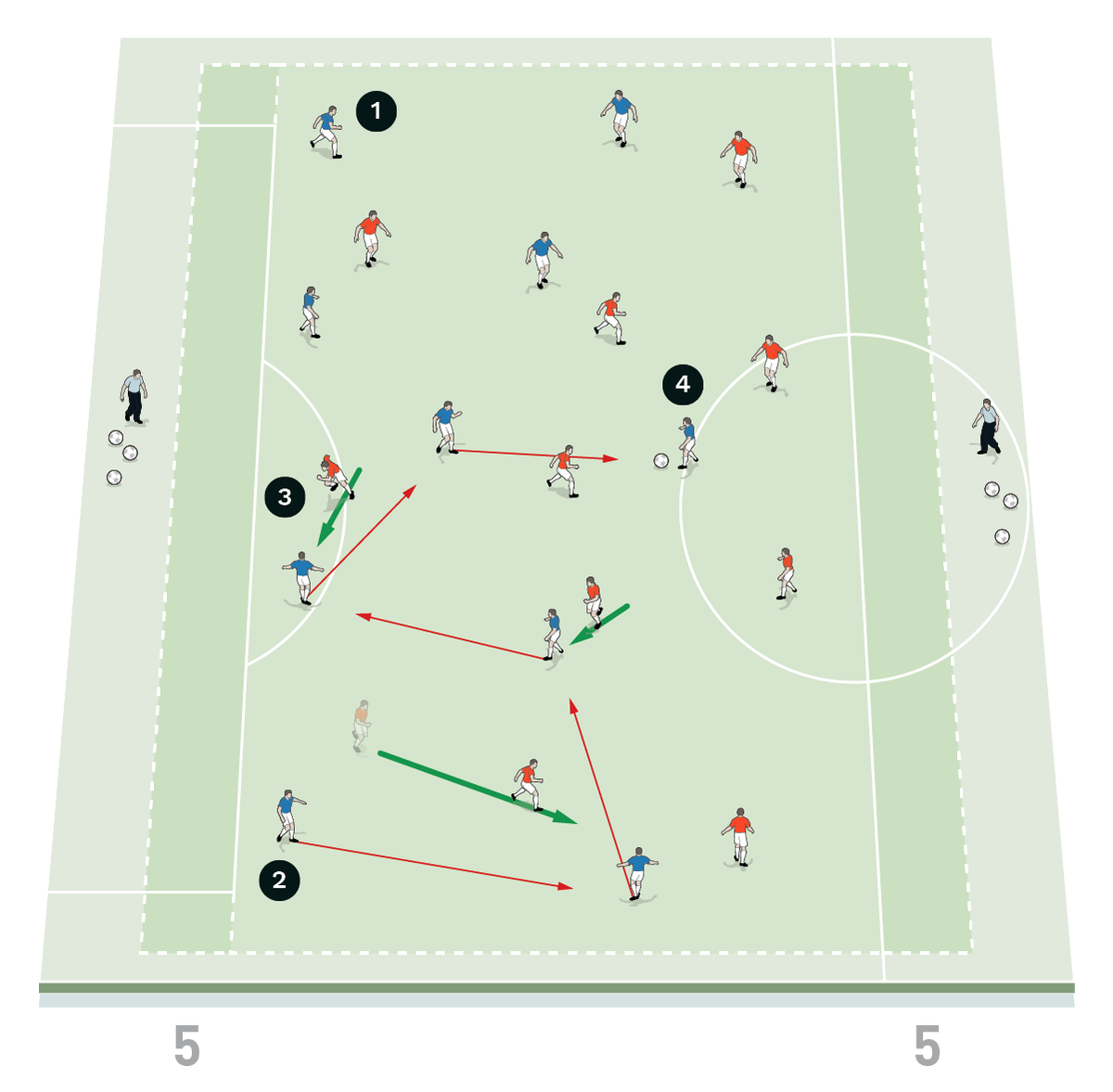
-
Both teams set up in their shape
- The blue team start in possession
- The red team look to win the ball back
- The blues complete 10 passes and gain a point
...but also if they come to the touchdown zone through long balls, combination play, or individually by carrying the ball, they get the goal [2b].
[2b]
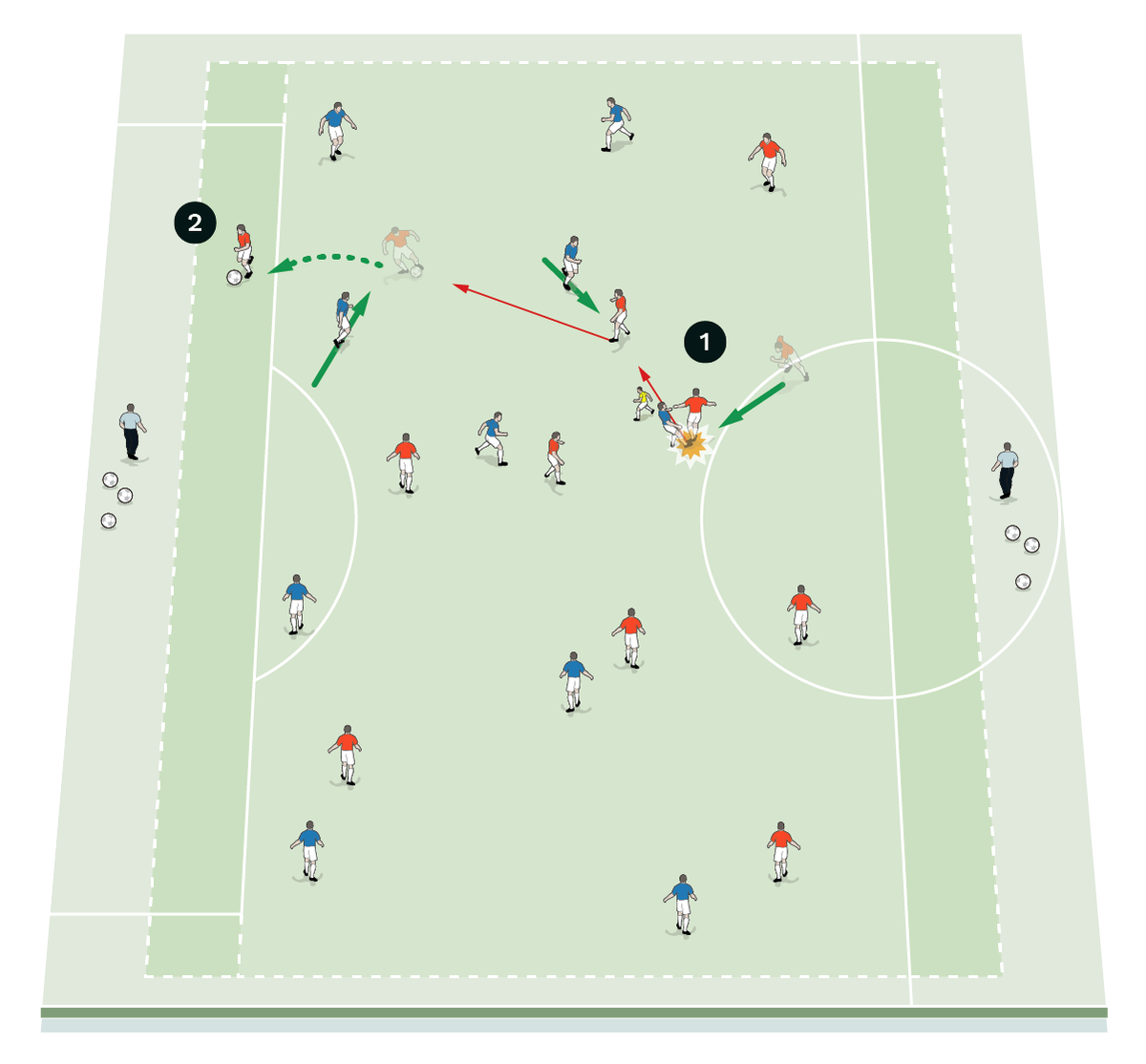
-
The reds win the ball back
- They combine to work the ball into the end zone, with a player dribbling in, to gain a point
No player can enter that zone before the ball (neither attacker nor defender). There is no offside rule in this game.
The good thing in this game is that it has technical, tactical and physical elements to it. You get all game situations (apart from shooting). You want the team in possession to pass the ball, keep it, make 10 passes to get a point, and to use the holes and spaces inside the opponent’s shape and behind them to progress with the ball and penetrate the touchdown area, plus maintaining their own structure to prevent a counter-attack.
The defending team has to defend as a team, recognise pressing triggers, not wait too long (because the opponent gets a goal after 10 passes), be organised, and make a quick offensive transition when they get the ball and try to score.
You can limit the touches to two, unless the player in possession runs with the ball and gets it to the touchdown zone and scores. To make it harder you can add the offside rule. Also you can change it by telling your coaches (who are next to the balls) that every time the ball goes out, they are not restarting it by playing to the centre backs, but by playing a long ball to the striker, and then everybody has to squeeze, push up and fight for the second ball. We’d run this for two blocks of four minutes each.
“The good thing in this game is that it has technical, tactical and physical elements to it”
THREE GOALS
We have the same teams, principles, shape, but we put three small goals on each side. Again we stay in the shape, players are in their positions, do what we have to do with or without the ball, except now we don’t defend the line but the three goals. So again teamwork is very important, along with coordination, leadership, using voices, keeping shape, shifting across, putting in the effort - all crucial when you are defending. The attacking team has to use the whole width with three goals, and it tests their decision-making, encouraging them to create on one side to finish on the other side [3].
[3]
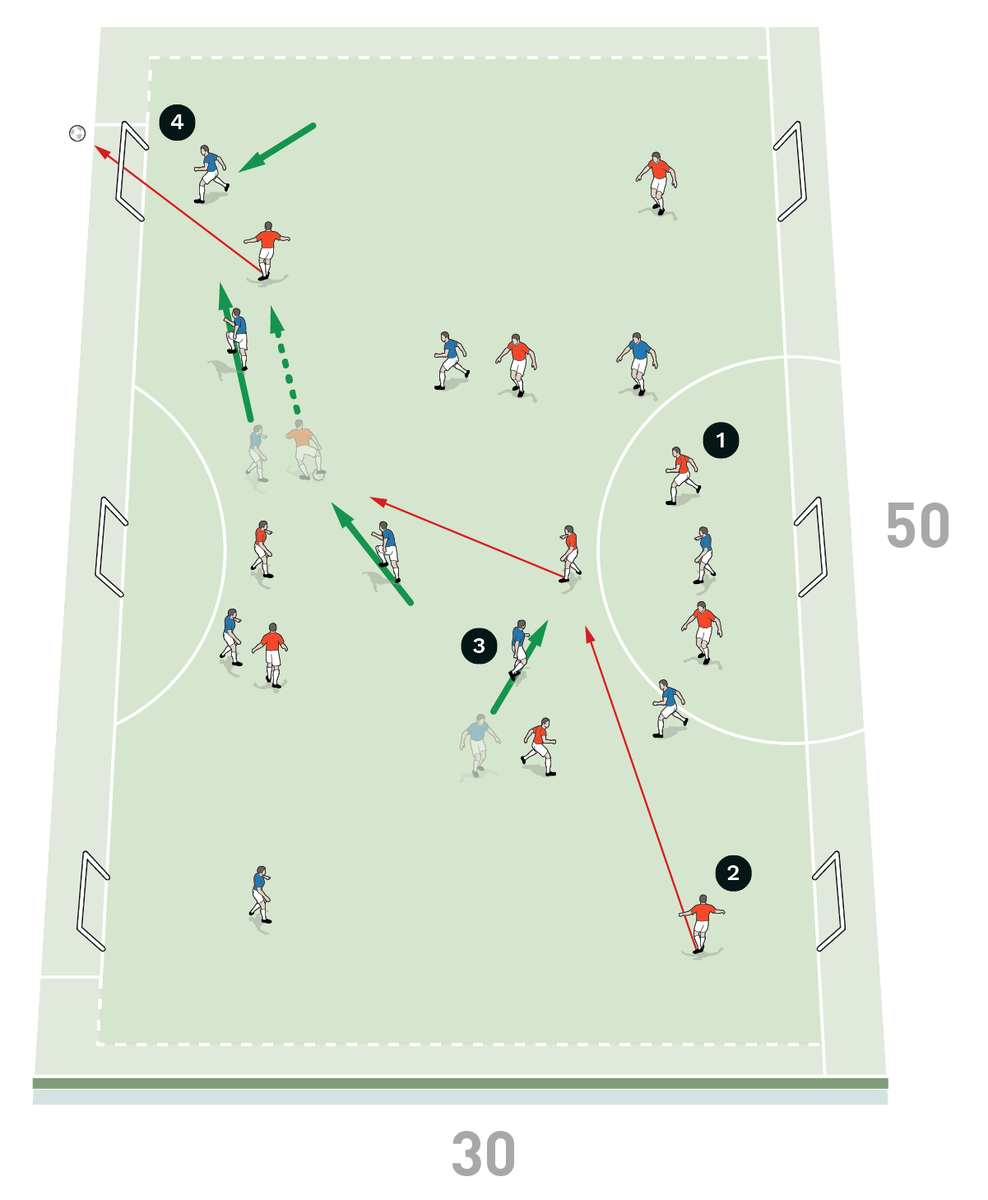
-
Both teams set up in their shape
- The red team start in possession of the ball
- The blues look to win the ball back
- The red team work the ball across the pitch to score in a mini goal
Both teams are facing many questions in a very competitive and tight environment. You can vary the number of touches, or use the offside rule, or one-touch finish and other small changes to make the game more difficult and demanding. That increases focus, quality, sharpness and quick decisions from the players. We’d run this for two blocks of four minutes each.
“Teamwork is very important, along with coordination, leadership, using voices, keeping shape, shifting across, putting in the effort”
WEMBLEY
The last part of the session is when the goalkeepers join and we play 11v11 on a whole half of the pitch. The winner gets two points, so either team can still win the whole session even if they were 2-1 down before the last game. If it was 3-0 before the last game, then you tell the losing team that they will do a forfeit - maybe extra running - if they don’t win the final.
Everything that you asked for so far in the session will be implemented in the final [4].
[4]
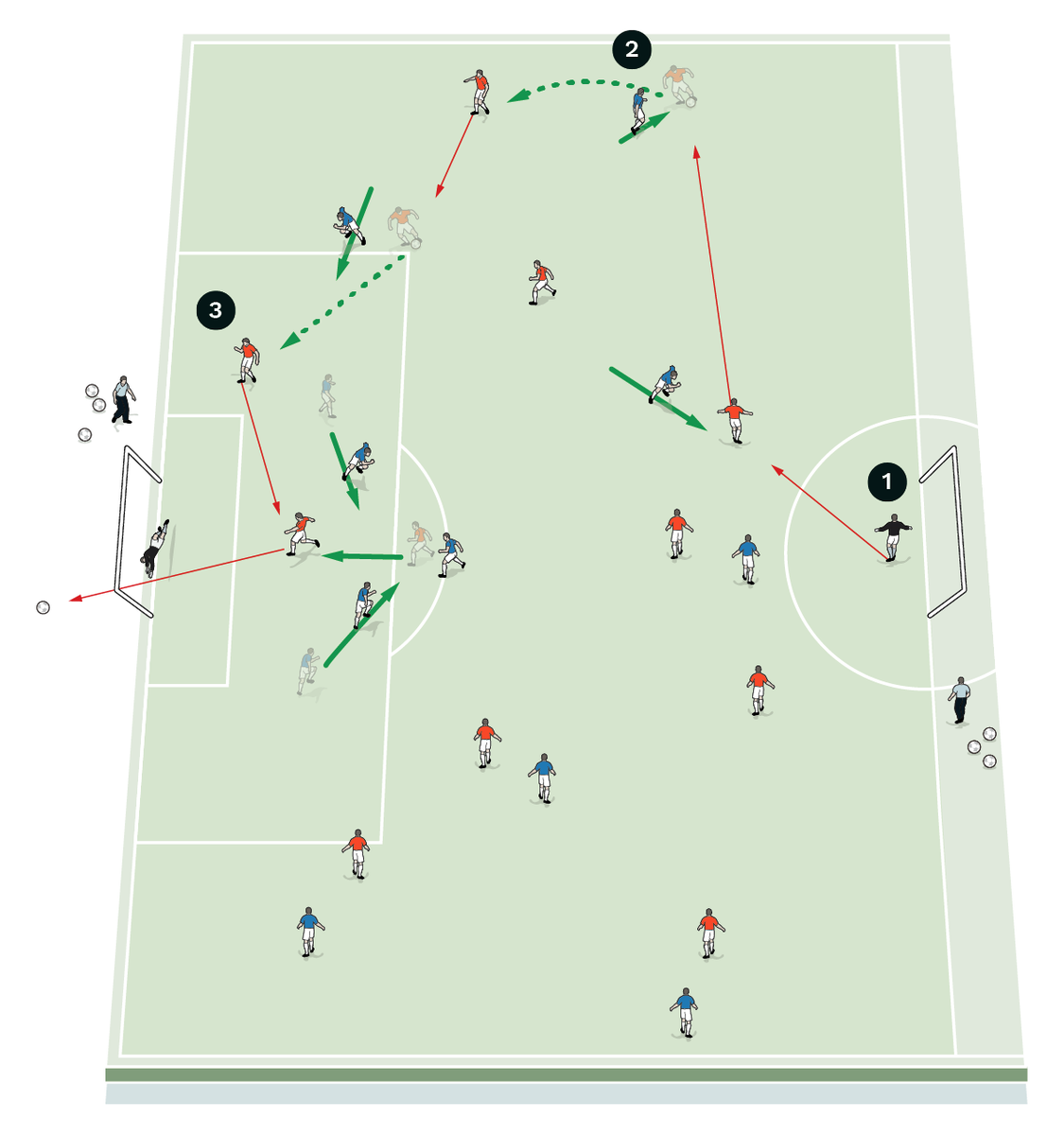
-
The red team are in possession and build up from the goalkeeper
- The red full back beats the blue winger then plays a ball in to their team-mate
- The red winger drives into the box and cuts the ball back for the centre forward to score
Keeping the ball that they got from getting 10 passes from the first two games, using the whole width of the pitch, running behind, transitions, positioning, passing angles, dribbling, individual quality, one-on-one situations. The defending team has to do everything that they were doing in the previous three games, in order to protect the goal, get the ball and penetrate. We’d run this for two blocks of six minutes each.
“Everything that we asked for so far in the session will be implemented in the final”
Editor's Picks
Attacking transitions
Deep runs in the final third
Using the goalkeeper in build-up play
Intensive boxes drill with goals
Penetrating the final third
Creating and finishing
My philosophy
Pressing initiation
Compact team movement
Coaches' Testimonials

Alan Pardew

Arsène Wenger

Brendan Rodgers

Carlos Carvalhal

José Mourinho

Jürgen Klopp

Pep Guardiola

Roy Hodgson

Sir Alex Ferguson

Steven Gerrard
Coaches' Testimonials

Gerald Kearney, Downtown Las Vegas Soccer Club

Paul Butler, Florida, USA

Rick Shields, Springboro, USA

Tony Green, Pierrefonds Titans, Quebec, Canada
Join the world's leading coaches and managers and discover for yourself one of the best kept secrets in coaching. No other training tool on the planet is written or read by the calibre of names you’ll find in Elite Soccer.
In a recent survey 92% of subscribers said Elite Soccer makes them more confident, 89% said it makes them a more effective coach and 91% said it makes them more inspired.
Get Monthly Inspiration
All the latest techniques and approaches
Since 2010 Elite Soccer has given subscribers exclusive insight into the training ground practices of the world’s best coaches. Published in partnership with the League Managers Association we have unparalleled access to the leading lights in the English leagues, as well as a host of international managers.
Elite Soccer exclusively features sessions written by the coaches themselves. There are no observed sessions and no sessions “in the style of”, just first-hand advice delivered direct to you from the coach.









